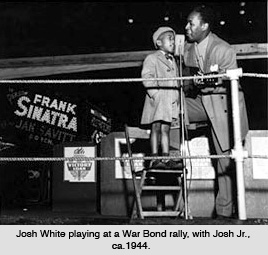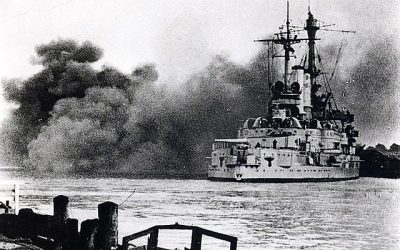For many African Americans, the war offered an opportunity to get out of the cycle of crushing rural poverty. Blacks joined the military in large numbers, escaping a decade of Depression and tenant farming in the South and Midwest. Yet, like the rest of America in the 1940s, the armed forces were segregated.
The Army accepted black enlistees but created separate black infantry regiments and assigned white commanders to them. The Army Air Corps’ black fighter wing was completely separate, training at an all black university at Tuskegee, Alabama. The Navy segregated Negro units and gave them the most menial jobs on ships. And the Marines, at least initially, didn’t even accept African Americans. At every training base, black and white soldiers were kept apart.
But in the chaos of war, segregation broke down. It’s hard to keep the races apart when both are being attacked.
The breakdown began as early as Pearl Harbor. As the battleship U.S.S. Arizona was sinking and still under attack, a Negro seaman who had been trained as nothing but a mess man rushed to the deck, grabbed an unmanned anti-aircraft machinegun and kept firing until his ammunition ran out. Only then did he abandon ship. For months, the Navy refused to even identify the sailor. Negro newspapers kept the story alive, and the Navy finally identified him as Dorie Miller and awarded him a medal.
The Tuskegee Airmen were assigned to North Africa and later to Italy. They flew 200 bomber escort missions over southern Europe without allowing a single bomber to be shot down by enemy fighters. Their longest mission took them over Berlin where they encountered at least eight of the new, fast jet fighters. They shot down two and damaged the other five. The unit received two Presidential citations, and individual flyers received 150 medals.
Yet discrimination continued at home. Thurman Hoskins left the rural community of York, Nebraska, for basic training in Louisiana. At first, his black unit was issued sticks instead of guns. “We were trained with sticks how to do all of the things that you do,” he says. Later they were issued the same Garand M-1 rifles the white troops had had. “It was kind of nice to have a gun instead of a stick.”


